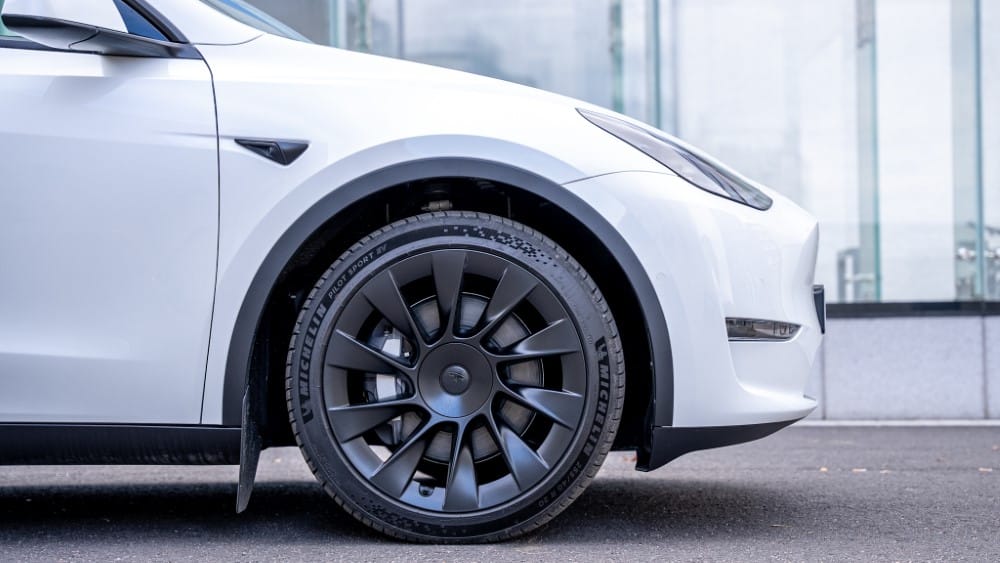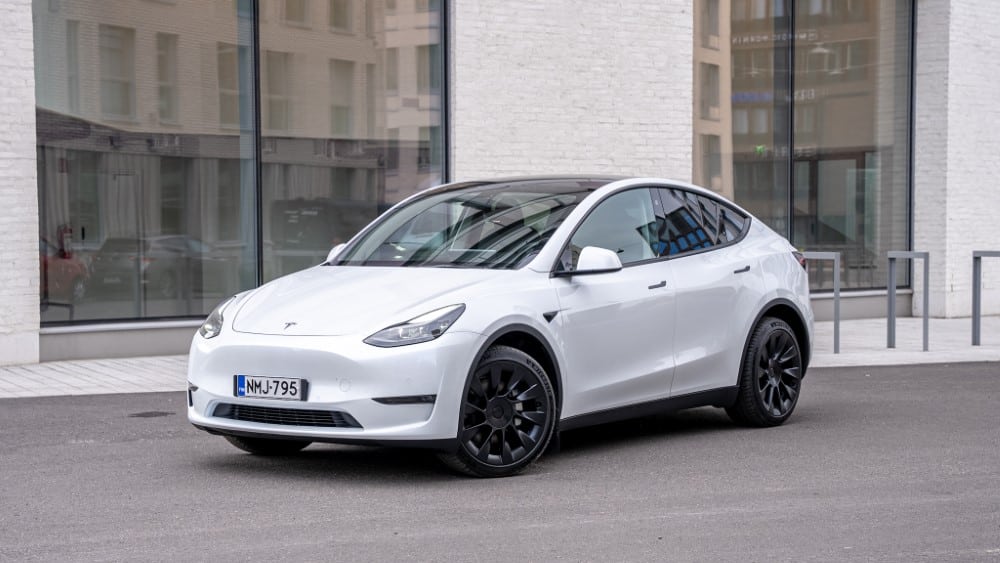The Tesla Model 3, which has achieved huge global popularity, is by many measures an all-electric car with no real challenger.
Tesla’s latest Model Y is in many ways a carbon copy of the Model 3, but in terms of space, the Model Y takes usability to the next level, particularly in the rear and boot.

Tesla classifies its all-electric new model as a mid-size SUV. There are as many as seven seats available or, with the seats folded down, more than 2.1 cubic metres of luggage space is available.
Compared to the Model 3, the Model Y’s larger boot and tailgate make it more practical for family use, while the deeper legroom in the rear seats makes it more comfortable for rear passengers.
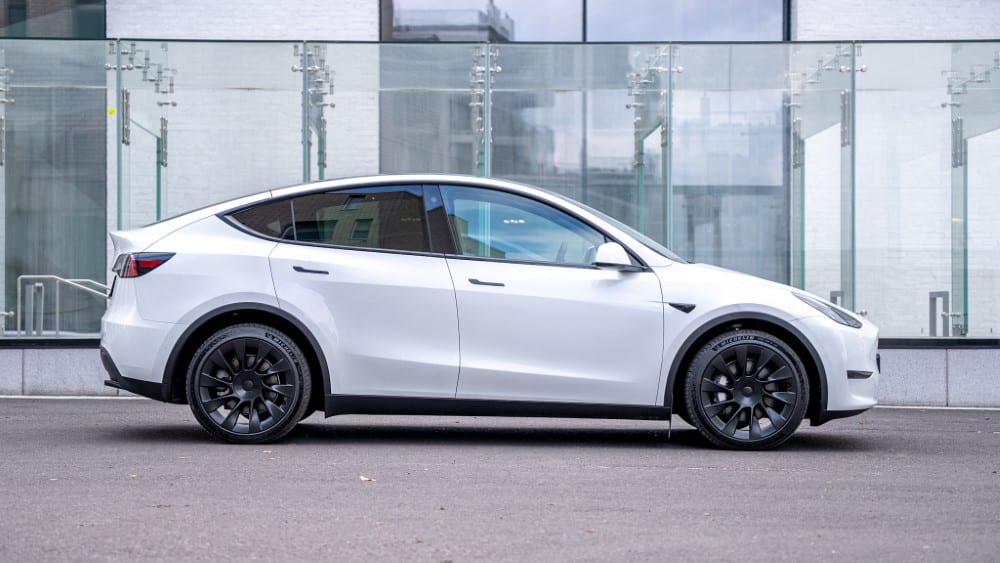
A delicious drive
The first test drive of the Model 3 was very confusing because of the car’s excellent driving qualities, the first of its kind, without any preceding model or decades of product development. In many respects, the Model Y is very similar to the Model 3, with a smooth and decisive ride.
The Model Y’s higher centre of gravity is noticeable in the form of a slight body roll when driving at higher speeds, especially on winding roads, but the higher seat height further enhances the excellent outward visibility.
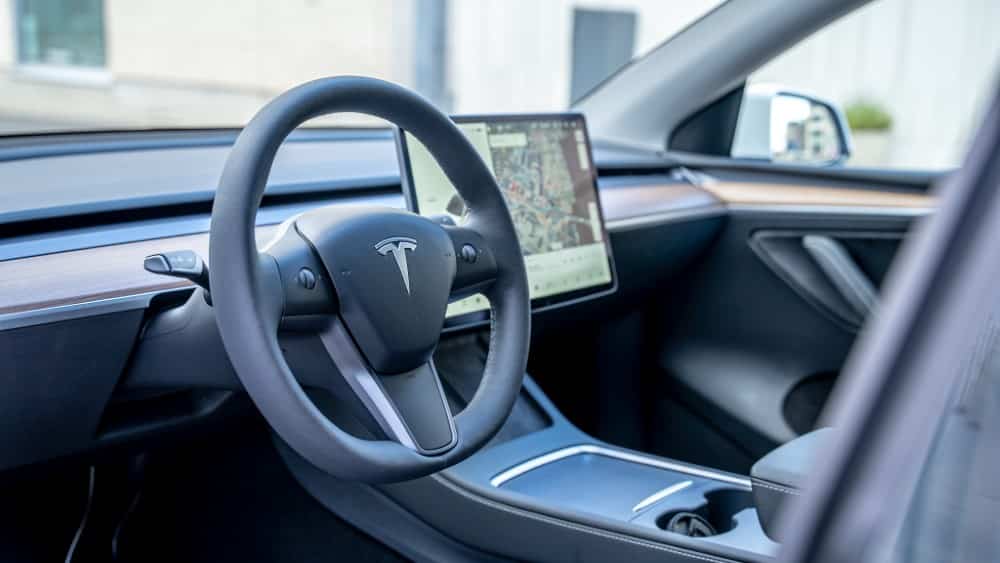
The chassis is rigid. At just over 2,000 kg, the car’s weight is not noticeable when driving, as it goes from zero to 100 km/h in five seconds, and the small-spoke steering wheel makes steering precise and responsive.
Inside, the cabin is apparently identical to the Model 3. The very minimalist and stripped-down cabin consists of a 15-inch instrument cluster, a steering wheel with two roller controls and indicators and gearshift whisks. Below the centre screen are wireless charging points for two mobile phones.
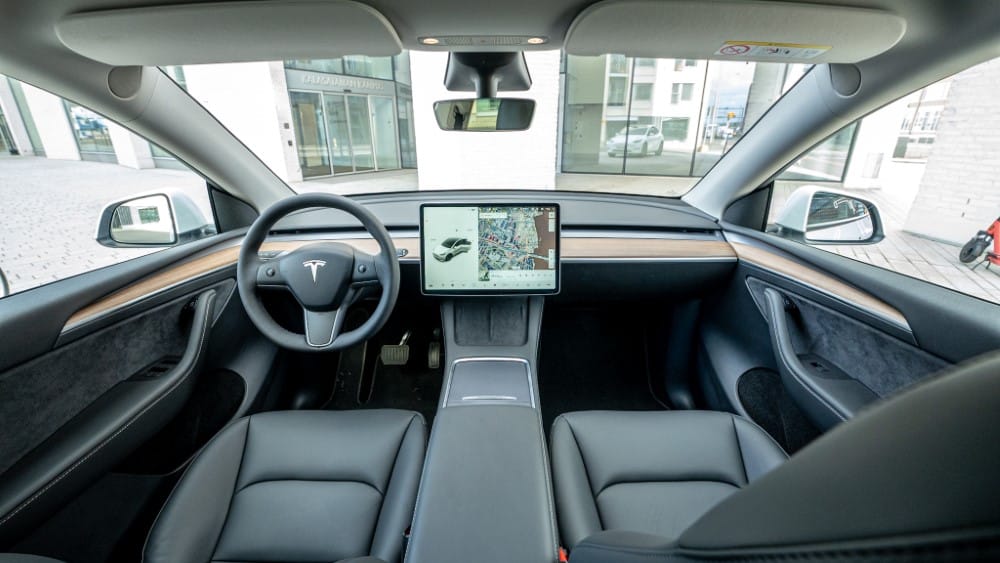
The lack of a gauge cluster behind the steering wheel has received a lot of criticism, mostly from people who haven’t driven the car.
The speed display is on the top left-hand side of the instrument cluster in large figures, and is many times easier to read in terms of usability than the traditional obscure instrument cluster with a small speed indicator. Other essential information apart from speed is then not required.
In terms of usability, the display takes some getting used to for the inexperienced driver, and “flicking” the screen while driving can easily distract you from driving – especially if you have to start looking for something on the screen. However, in terms of interface, the on-screen system is fast, seamless and unrivalled.
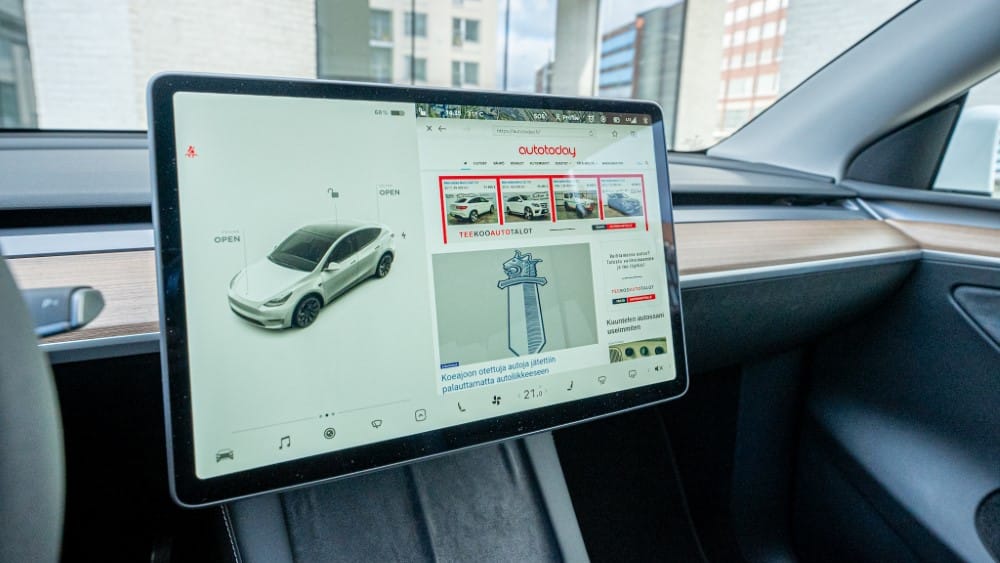
The car’s own internet connection allows you to use Google as a map and navigation tool, and your favourite music can be played directly from Spotify. When the car is stationary, you can play YouTube or Netflix, for example, on the screen.
Electric Yard Guy
For full electric cars, one of the most important and sensitive issues is electricity consumption in normal everyday use, especially in cold conditions.
Electricity consumption and car charging are affected by many factors that only time will tell. The limited battery charge levels, combined with Finland’s long distances and incomplete and growing charging infrastructure, mean that the consumption figures for full electric cars play an important role in calculating the driving radius.
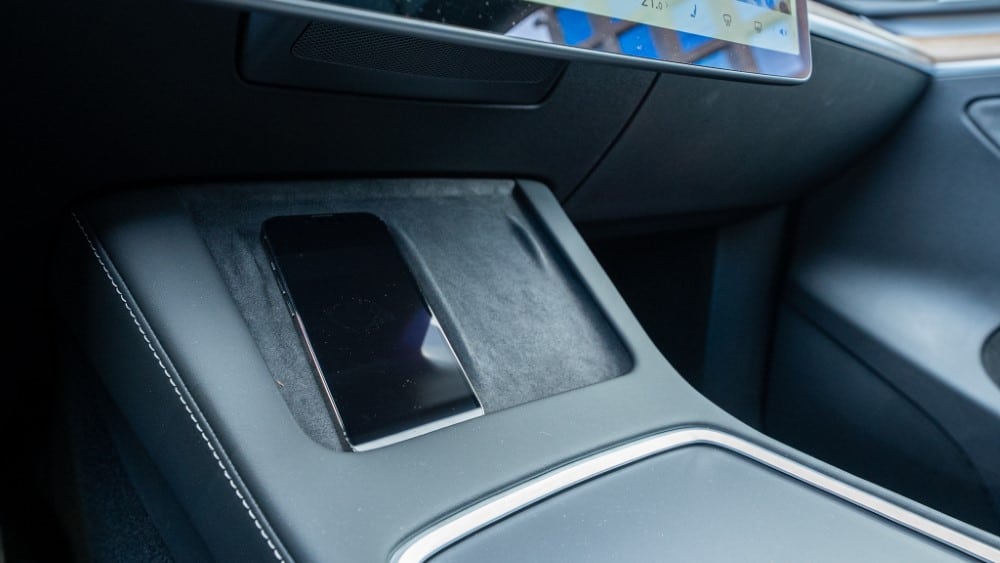
Based on one day of test drives, it is difficult to say anything more in-depth about the Model Y’s actual electricity consumption, but the figures looked quite promising during the 300 km drive.
In mixed city and highway driving at speeds ranging from 0-80 km/h, average consumption varied between 14-18 kWh/100 km. On the motorway at 120 km/h the average consumption was around 20-21 kWh/100 km. During the test drive, the temperature was 10 degrees Celsius.
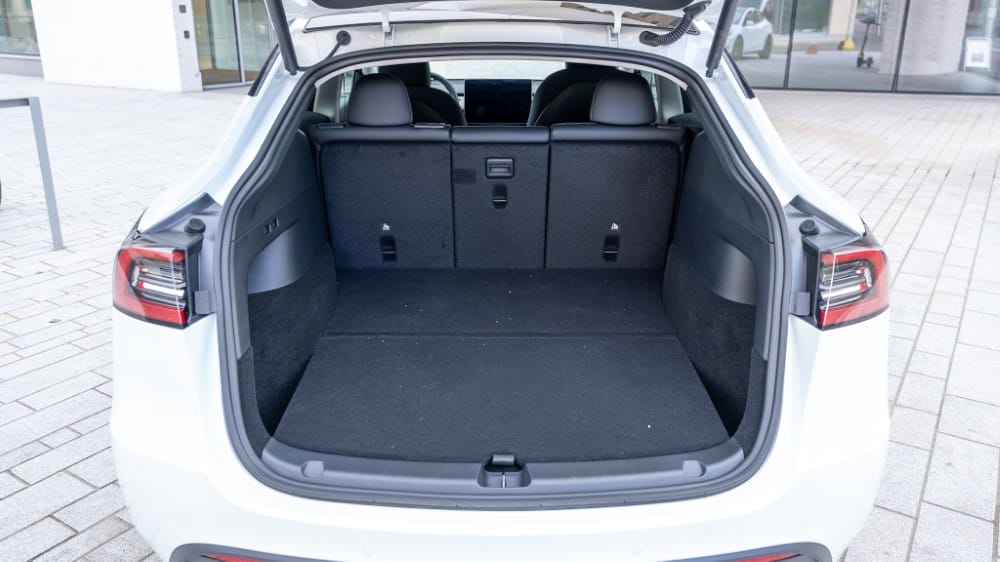
The manufacturer claims a range of 507 km. In reality, depending on driving speed, outside air temperature, number of “cold starts” and many other factors, the car will cover about 300-400 kilometres on a full battery.
In harsher winter frosts, the range is likely to be less than 300 km if the car is driven several times in the cold and the interior heaters are sucking power for heating.
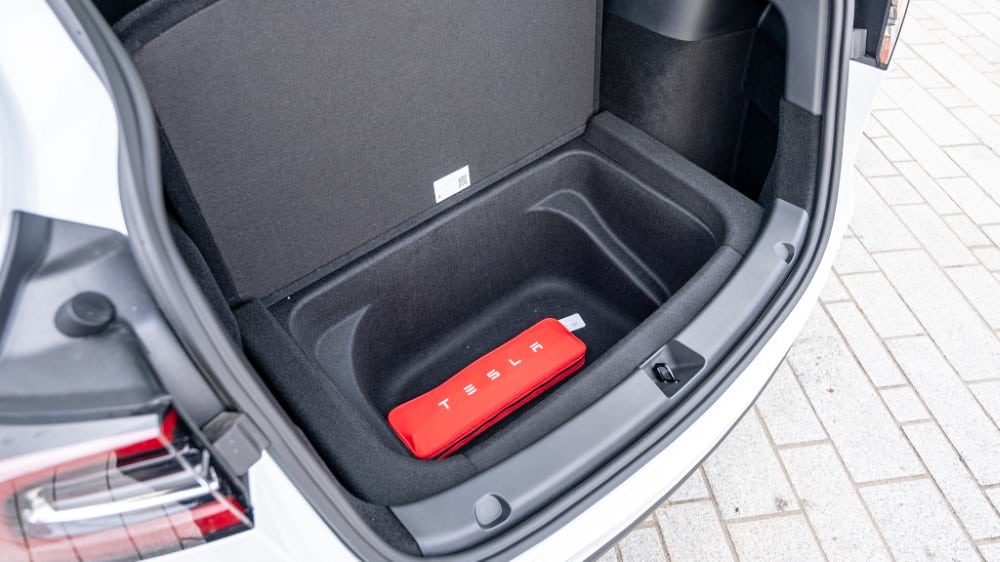
Comparing the test-drive electricity consumption to similarly sized models from other manufacturers, the Model Y’s electricity consumption is right at the top.
Compared to the Model 3, the Model Y seems to consume around 5-20% more electricity, depending on driving speed. The higher electricity consumption is certainly largely explained by the physically larger size, causing greater drag as speed increases.
The whine of electric motors
The four-wheel drive Model Y Long Range is powered by two electric motors mounted on both axles. A more powerful Performance model of the Model Y will also be available in the future.
There’s been a lot of talk about Tesla’s quality, partly for good reason, partly out of ignorance, and the dimensions have been inflated by the media turmoil. A closer look at the test car from the top, the Model Y appears to be a quality play inside and out.
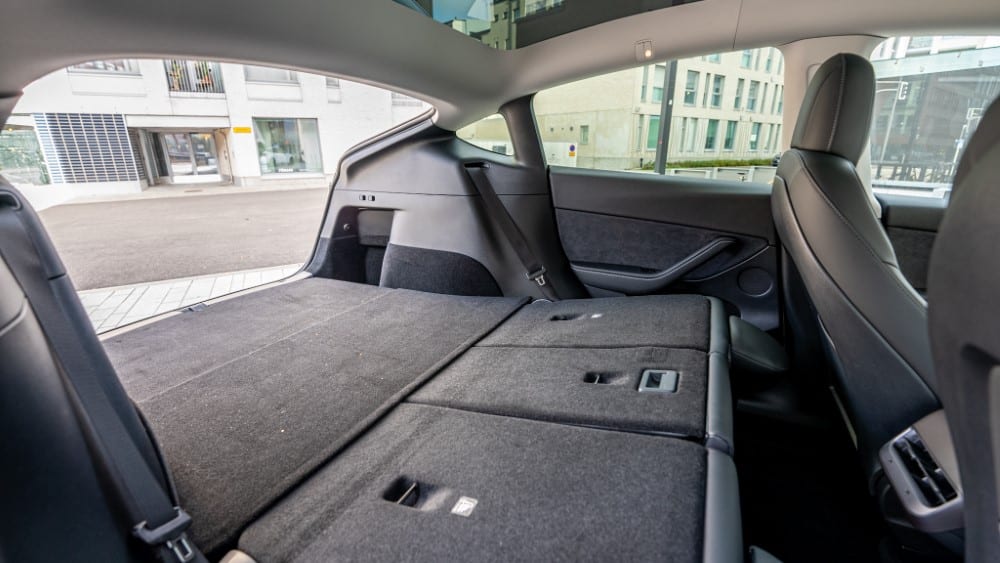
Compared to the Model 3, the outside has seen some product improvements in terms of paint protection. Larger splash plates at the front and a black plastic lower fascia and lower rear door protection film that has been replaced by metal instead of black plastic protect the body paint from stone chips, which has been a weak link in Tesla’s sensitive paint finish.
From many angles, the Model Y is one of the hottest new products in the electric car market today.
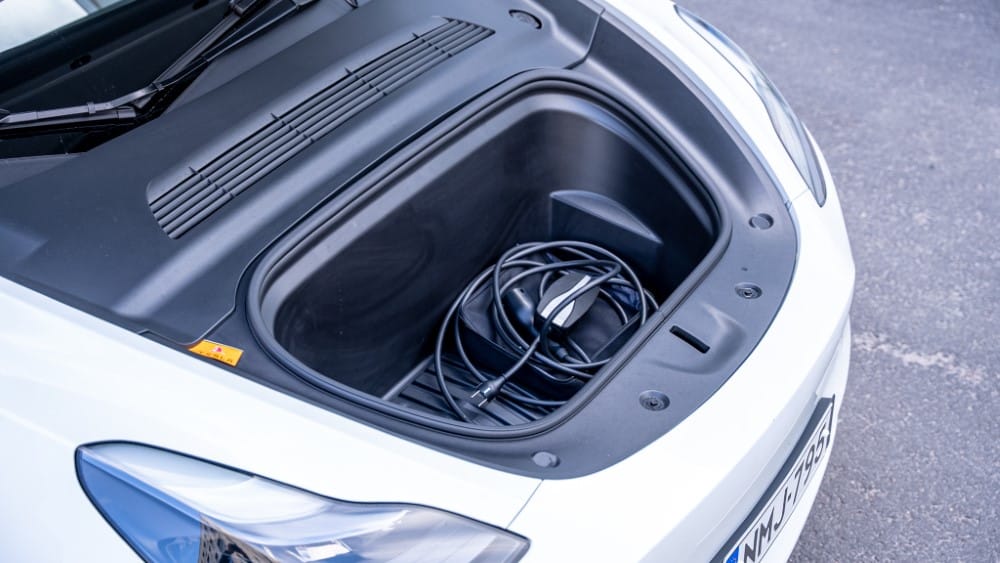
It’s hard to find any obvious weaknesses in the Model Y. During the short test drive day, the main weaknesses were the annoying whine caused by the electric motors when reversing the car and at speeds of around 80 km/h, and the range, which is still a reasonable 300-400 km for everyday driving due to the smaller battery than the Model 3 Long Range.
Tesla Model Y Long Range
- Indicated range on a single charge: 507 km.
- Test-driven range on a single charge: 300-400 km.
- Acceleration: 5.0 sec (0-100 km/h)
- Combined consumption: 16.9 kWh/100km.
- Test drive consumption: 14-22 kWh/100km.
- Curb weight: 2003 kg.
- Drive mode: four-wheel drive
- Cargo space: up to 2158 l.
- Towing capacity: 1600 kg.
- Starting price: €64 400
Updated 21.10. (Removed mention of the Model 3 and Model Y having the same base plate.


